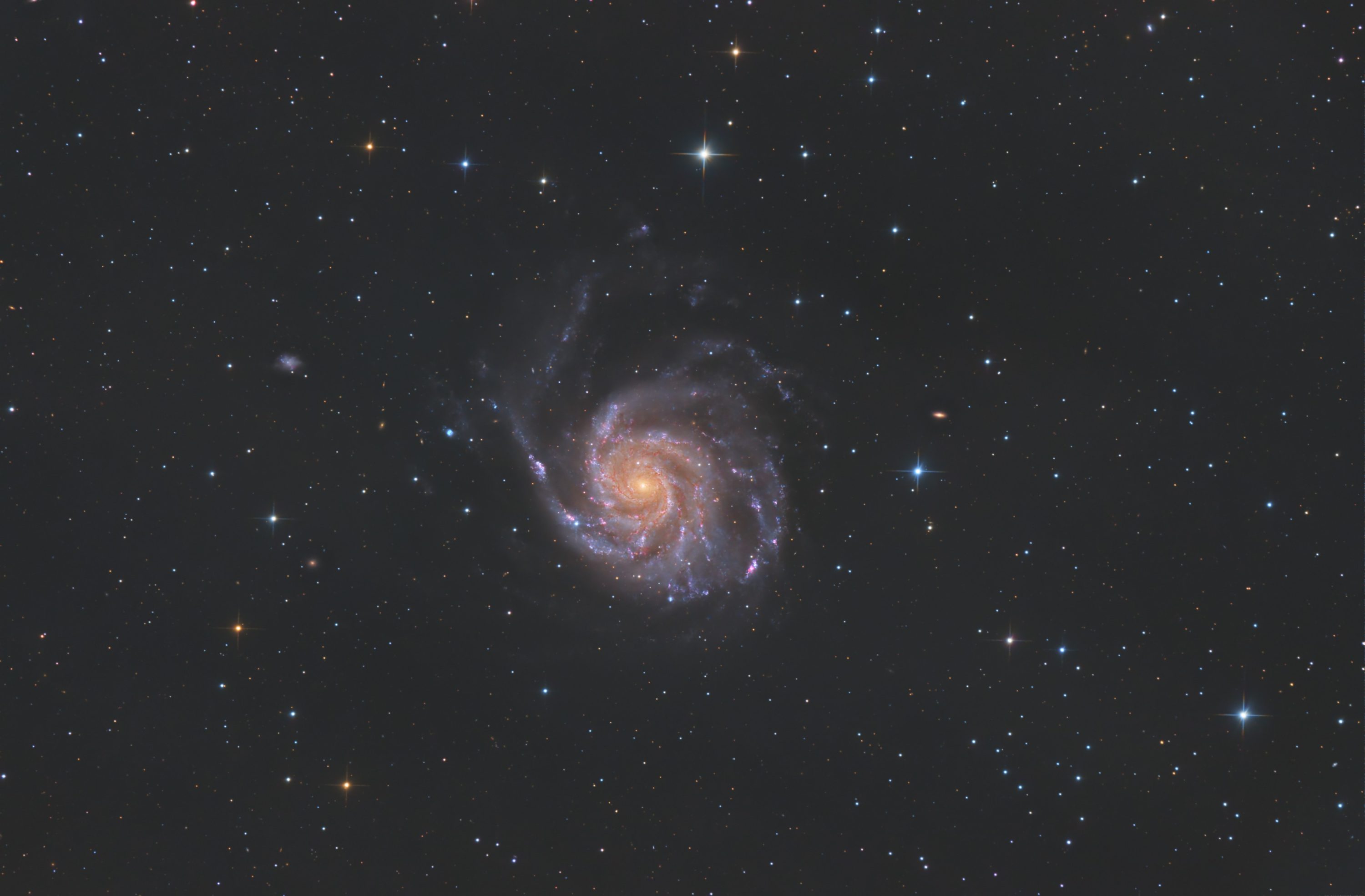No products in the cart.
Messier 101 Pinwheel Galaxy
In the vast expanse of the cosmos, one celestial wonder stands out among the stars—the magnificent Messier 101 galaxy. Situated in the constellation of Ursa Major, this breathtaking spiral galaxy has captivated astronomers and stargazers alike for centuries. Let’s embark on a journey through the depths of space to uncover the enigmatic allure of Messier 101.
Overview of Messier 101 Galaxy
At an estimated distance of 21 million light-years from Earth, Messier 101, also known as the Pinwheel Galaxy, reigns as a prominent member of the Virgo Supercluster. With a diameter spanning over 170,000 light-years, this grand spiral galaxy showcases its remarkable arms, reminiscent of a spinning pinwheel. The classification of Messier 101 as a spiral galaxy highlights its intricate structure and distinctive features.
Structure and Composition
As we delve deeper into the heart of Messier 101, we encounter its captivating structure and composition. The galaxy boasts graceful, sweeping spiral arms, adorned with clusters of newborn stars and interspersed with dark, winding dust lanes. These cosmic dust lanes, composed of gas and debris, intricately weave through the galaxy, adding to its allure. Messier 101 serves as a celestial nursery, nurturing the birth of new stars within its vast expanse.
Observation and Discovery
The tale of Messier 101 dates back to the 18th century when renowned astronomer Pierre Méchain first identified this celestial wonder. However, it was his colleague Charles Messier who included it in his famous catalog, hence its name, Messier 101. Since its discovery, astronomers have directed their telescopes and gaze toward this magnificent galaxy, unearthing its secrets and unraveling its mysteries.
Importance in Astronomy
Messier 101’s significance extends beyond its inherent beauty. Astronomers regard it as a vital tool in unraveling the complexities of galaxy formation and evolution. Its structure and characteristics provide crucial insights into the processes that shape
Image technical:
- Starfield Optics 8″ Astrograph (native F4) http://bit.ly/3WOrKsf
- Starizona NEXUS .75 reducer/coma corrector for F3 https://bit.ly/3MCijaB
- QHY268M CMOS Camera (https://bit.ly/3Aj23FE), 26mp, 3.76um @ -10C
- QHY CFW3-L 7 position https://bit.ly/3IiYoxY
- Optolong filters (HaOIII-LRGB) https://bit.ly/3WQd5N7
- Skywatcher EQ6 mount https://bit.ly/3jEonpC / Skyshed Pier (Skyshedpod.com)
- Pegasus Astro Focus Cube https://bit.ly/2NDdEb2
- NINA 2.0 for acquisition https://nighttime-imaging.eu/
- Processed in PixInsight
- Seeing and transparency: average to good
- Total integration time: 19 hours 25min (1min subs at high gain)
- Location: Kitchener, Ontario, Canada
Buying astro gear? Help support my efforts in bringing the astro community new content (videos, tutorials, tips, reviews) by using these affiliate links to purchase astro equipment. I’ll receive a small commission at no cost to you.
Ontario Telescope (Canada)
All-Star Telescope (Canada)
New to Pixinsight image processing? Get in touch! I provide one-on-one lessons via Zoom.
You can also buy me a coffee via…
https://paypal.me/visibledark or https://www.buymeacoffee.com/visibledark

My story began more than 40 years ago looking up at the Moon with a small telescope my Father had. Encouraged by my parents, who bought me my very own telescope, a 4.5″ reflector, I began to explore the night sky from my family home backyard. Today I do astrophotography from my home in Kitchener, Ontario and also with remote telescopes located in New Mexico and Australia. Some of my images have won awards and have been featured online and in magazines.



Leave a comment...